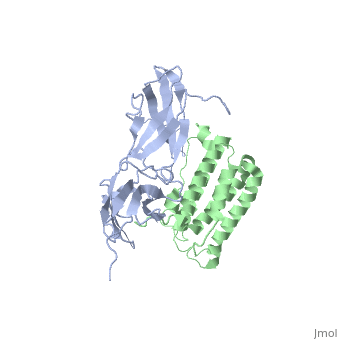
positive regulation of isotype switching to IgG isotypes.sensory perception of mechanical stimulus.CD8-positive, alpha-beta T cell differentiation involved in immune response.positive regulation of tumor necrosis factor production.positive regulation of cell population proliferation.positive regulation of T cell proliferation.positive regulation of neuron differentiation.regulation of interferon-gamma-mediated signaling pathway.positive regulation of transcription, DNA-templated.positive regulation of fructose 1,6-bisphosphate metabolic process.positive regulation of vitamin D biosynthetic process.negative regulation of transcription by RNA polymerase II.positive regulation of peptidyl-serine phosphorylation of STAT protein.positive regulation of calcidiol 1-monooxygenase activity.positive regulation of killing of cells of other organism.positive regulation of osteoclast differentiation.positive regulation of epithelial cell migration.positive regulation of membrane protein ectodomain proteolysis.positive regulation of synaptic transmission, cholinergic.positive regulation of nitric oxide biosynthetic process.regulation of neuronal action potential.regulation of the force of heart contraction.positive regulation of smooth muscle cell apoptotic process.positive regulation of interleukin-12 production.positive regulation of tumor necrosis factor (ligand) superfamily member 11 production.regulation of transcription, DNA-templated.positive regulation of fructose 1,6-bisphosphate 1-phosphatase activity.negative regulation of smooth muscle cell proliferation.positive regulation of MHC class II biosynthetic process.Any other social or medical condition that the Investigator believes would pose a significant hazard to the subject if the investigational therapy were initiated or be detrimental to the study.ALT greater than 3 fold higher than normal or.Participation in simultaneous therapeutic study that involves an investigational study drug or agent within 4 weeks of study enrollment.Known or suspected allergy to interferon gamma-1b or related products.Patient or parent/legal guardian is able and willing to provide informed consent.įor patients 7 to 17 years of age, assent must also be provided.Ability to travel to a study center for every 3-6 month study visits and.Change in immunologic and hematologic function, bone mineral density and osteoclast function, physical function and quality of life.Specifically, i) the ability to enroll patients, and ii) continued treatment throughout the 1-year observational period. The feasibility and tolerability of interferon gamma-1b treatment for 1 year in patients with intermediate osteopetrosis.

COPAY ASSISTANCE INTERFERON GAMMA 1B TRIAL
Therefore, the investigators will conduct an early phase 2, multi-center, open-label, 12-month clinical trial of ACTIMMUNE (IFN-γ1b) treatment of patients with intermediate osteopetrosis to determine the following: Two previous studies of IFN-γ1b in a small group of individuals with osteopetrosis found a decrease in trabecular bone area, an increase in marrow space, a decrease in the number of severe infections requiring antibiotic therapy, and an increase in superoxide generation by granulocyte-macrophage colonies. Interferon gamma (IFN-γ) is a naturally occurring cytokine that has been shown to have anti-microbial and anti-viral immunomodulatory effects, and is a potent stimulator of superoxide anion production which in turn promotes the formation and activation of osteoclasts. Thus additional treatments for osteopetrosis are needed both for individuals who are not candidates for HCT and to prolong the time until HCT is needed. Therefore, this treatment is only indicated in select individuals with life-threatening complications of their disease. In patients with severe disease, this high bone mass compromises bone marrow space leading to marrow failure and frequent infections, along with hepatosplenomegaly from extramedullary hematopoiesis.Ĭurrently, the only treatment for individuals with severe forms of osteopetrosis is hematopoietic cell transplantation (HCT), however survival in patients with osteopetrosis treated with HCT is only around 55%. Osteopetrosis is a rare inherited metabolic bone disease characterized by impaired osteoclast function resulting in defective bone resorption and generalized high bone mass and mineral density (BMD).


 0 kommentar(er)
0 kommentar(er)
